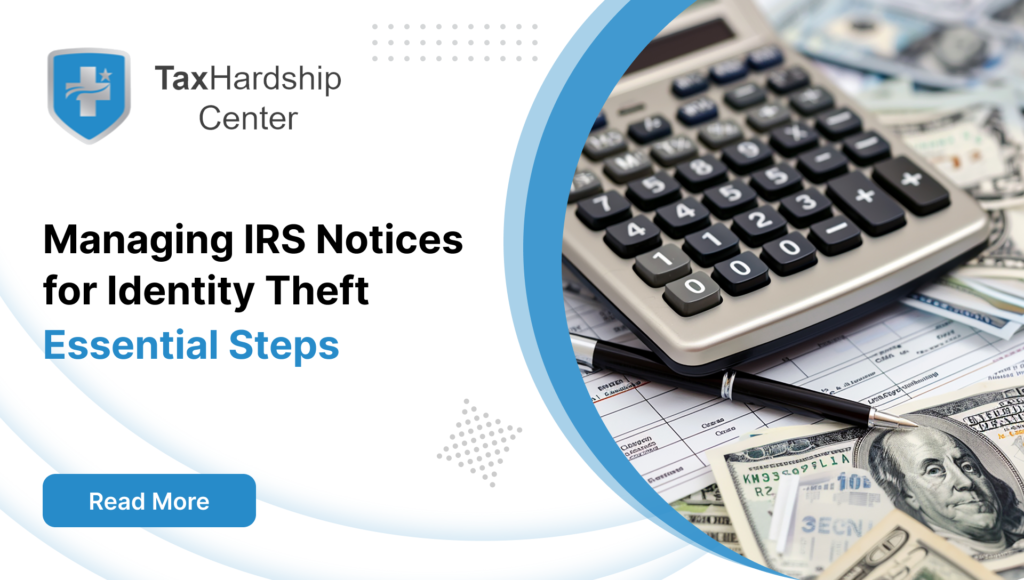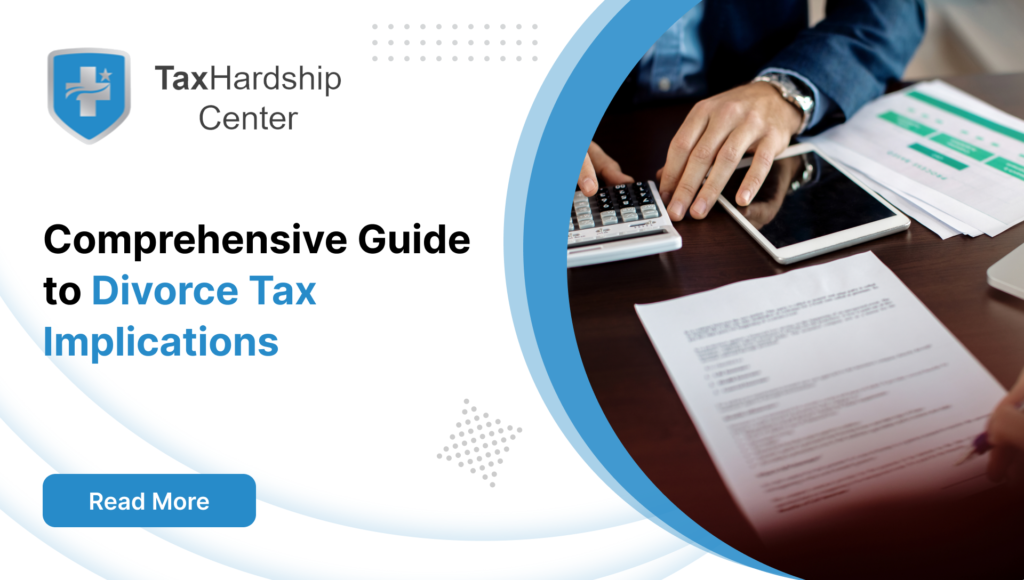Understanding the IRS Hardship Program:
The Internal Revenue Service (IRS) offers a relief option for taxpayers who cannot meet their tax obligations due to financial hardship. This option is formally called Currently Not Collectible (CNC) status, as outlined in Part 5, Chapter 16, Section 1 [IRM 5.16.1] of the Internal Revenue Manual. CNC status temporarily halts the IRS’s collection efforts, recognizing that forcing payment would render the taxpayer unable to cover basic living expenses.
Criteria and Stipulations for Hardship Consideration:
Meeting the requirements:
The primary condition for CNC consideration is demonstrating that paying the tax debt would result in significant financial difficulty, leaving the taxpayer incapable of affording necessary living expenses such as housing, food, utilities, and healthcare.
Duration of the relief:
CNC status is not a permanent fix. The taxpayer’s financial situation is subject to periodic review, and if the IRS determines their ability to pay has improved, collection activities may resume.
Why is Tax Hardship Center your best choice for Tax Hardship Matters?
The Tax Hardship Center has successfully served clients for many years. The Tax Hardship Center keeps things transparent about the process or service charges. The THC will provide transparent detailing at every step and make it easy to understand.
THC offers a 14-day money-back guarantee program where you can get a refund if your tax issues are unresolved and they don’t fulfill their promise. The Tax Hardship Center provides the best possible result for your solution, no matter how unique your problem is. Click here to book your free expert session to avail yourself of immediate assistance from expert professionals.
Proving Financial Hardship to the IRS:
1. Submission of financial information: Taxpayers must present a detailed financial situation to the IRS by submitting specific forms.
2. Forms for individuals and corporations: Individuals or self-employed taxpayers must use Form 433A or Form 433F, whereas corporations or partnerships must provide Form 433B.
3. Necessary documentation: The Collection Information Statement forms, along with supporting documents, require comprehensive data, including
- A complete inventory of the taxpayer’s assets, including bank accounts, investments, retirement funds, vehicles, real estate, life insurance policies, and other personal property.
- An estimated market value for each listed asset, providing a clear financial snapshot to the IRS.
- Detailed income statements encompassing the last three months to establish the taxpayer’s revenue streams.
- Comprehensive spending statements for the past three months to assess regular outgoings.
- Calculation of three-month average income versus expenses, categorized to understand the taxpayer’s financial capacity better.
Considerations for Taxpayers Weary of Full Disclosure:
1. Privacy concerns:
Although necessary, submitting personal financial details can cause concern. The IRS assures confidentiality, but some taxpayers may feel uneasy about such extensive disclosure.
2. Alternative payment arrangements
The IRS offers alternative solutions, such as online payment agreements, for those hesitant to provide this information. These arrangements are more straightforward to secure than the hardship program and require less financial exposure.
3. Qualifying for payment plans
Payment agreements are more readily available for taxpayers who can pay their tax debt over time. By entering into such a plan, one can avoid the immediate financial burden and breakdown of assets that CNC status might entail.
Unburdening Your Back: A Deep Dive into IRS Financial Hardship Eligibility
Struggling to pay your tax bill while barely making ends meet? You’re not alone. The IRS acknowledges financial hardship for specific individuals and offers programs to mitigate collection actions. Understanding who qualifies can be the first step towards relief.
- Meeting the Threshold: The IRS uses Forms 433A, 433B, and 433F to assess your financial situation. Generally, eligibility hinges on three key factors:
- Annual Income: Your income must fall below $84,000 (adjusted for family size) for the current tax year.
- Limited Disposable Income: After covering your essential living expenses, you must have very little or no income remaining.
- Approved Living Expenses: The IRS defines specific categories for allowable expenses, called collection financial standards:
- Basic Needs: Food, clothing, housekeeping supplies, personal care products, and miscellaneous items.
- Healthcare: Out-of-pocket medical expenses.
- Housing & Utilities: Rent, mortgage payments, property taxes, utilities, and homeowner’s insurance.
- Transportation: Public transportation, car payments, gasoline, and auto maintenance.
Calculating Your Net Disposable Income:
To demonstrate hardship, tally up your monthly allowable living expenses and subtract them from your monthly income. The resulting figure is your net disposable income, and the IRS expects you to apply some of it toward tax debt. You may qualify for hardship programs if this calculation shows little to no disposable income.
Types of Hardship Relief:
The IRS offers various programs based on your specific circumstances:
- Currently Not Collectible (CNC) Status: Temporarily suspends collection actions, offering breathing room while you improve your financial standing.
- Installment Agreement (IA): Allows manageable monthly payments to settle your debt gradually.
- Partial Payment Installment Agreement (PPIA): This may qualify you to pay less than the entire debt over a specific period.
- Offer in Compromise (OIC): In rare cases, you may settle your debt for a significantly lower amount, but strict criteria apply.
Important Caveats:
CNC codes typically apply to individual taxpayers and small businesses, not large corporations. Corporations facing hardship may need to explore bankruptcy options.
Each program has specific eligibility requirements and application procedures.
Documentation demonstrating your financial hardship is crucial for approval.
Taking Action:
If you believe you meet the criteria, contact the IRS or seek professional assistance from a tax advisor. They can help you navigate the process, complete the necessary forms, and submit your application effectively.
Remember, navigating IRS hardship programs can be complex. By proactively taking the first step and understanding the eligibility requirements, you can open the door to financial relief and regain control of your situation.
Understanding the IRS Hardship Rules: A Shield Against Collection Actions
When facing overwhelming tax debt, the IRS Hardship Rules can provide a temporary respite from aggressive collection measures. Here’s a comprehensive breakdown of how they work and what they mean for your finances:
Protection Under CNC Status:
If your account is designated as “Currently Not Collectible” (CNC) due to financial hardship, the IRS is prohibited from pursuing most collection procedures, including:
1. Tax Liens:
- A legal claim against your property (real estate, personal assets, financial accounts) to secure the government’s interest in your debt.
- It prevents you from selling or refinancing property without settling the tax debt.
- Remains in place until the debt is fully repaid or the statute of limitations expires (typically ten years).
2. Tax Levies:
- Direct seizure of your property or assets (bank accounts, wages, vehicles, etc.) to forcibly collect payment.
- Levies can be significantly disruptive to your financial stability.
- Hardship status can temporarily halt levies but not erase the debt.
- The IRS directs your employer to withhold a portion of your paycheck (up to 15%) and send it directly to them for tax debt repayment.
- Some wages may be exempt based on standard deductions and personal exemptions, but garnishment continues until the debt is resolved.
Duration of Hardship Relief:
- Due to hardship, CNC status can typically last up to 10 years, aligning with the IRS’s statute of limitations for collecting back taxes.
- However, the IRS can periodically review your financial situation and potentially lift CNC status if they determine your ability to pay has improved.
Key Considerations:
- Temporary Protection: Hardship status is not a permanent solution. It’s crucial to address the underlying debt to avoid future collection actions.
- Communication and Compliance: Stay in contact with the IRS, provide updated financial information, and comply with any requests to maintain your CNC status.
- Explore Long-Term Solutions: While hardship rules offer a pause, consider options like installment agreements or offers in compromise to achieve a more sustainable resolution.
Conclusion:
Facing tax debt while struggling financially can be overwhelming, but understanding and utilizing the IRS Hardship Program can provide a reprieve. Currently Not Collectible (CNC) status shields taxpayers from aggressive collection actions, including tax liens, levies, and wage garnishments. However, it’s essential to recognize that this relief is temporary, and the IRS may review your financial situation periodically. Exploring long-term solutions, maintaining communication with the IRS, and considering alternative arrangements can contribute to a more sustainable resolution beyond the temporary protection offered by the hardship program.
Tax Hardship for Small Businesses and Individuals: The Top Service Providers to Consider
Thousands of Americans are facing issues with tax hardship. The primary problem is either underreporting to the IRS, underpayment, or delay in paying taxes to the IRS. If you owe tax debt to the IRS and are worried about the same, know that you are not alone. Fortunately, the IRS does provide options for tax relief to taxpayers.
Are you drowning in tax deadlines and penalties? The Tax Hardship Center (THC) is not just any tax firm – we’re small business champions dedicated to navigating the complex IRS maze and securing the relief you deserve.
Taxes shouldn’t strangle your entrepreneurial spirit. THC empowers you to reclaim your financial freedom with comprehensive services tailored to your needs. Forget endless paperwork and late fees – let us be your tax warrior while you focus on what matters most: building your business.
Connect with a Tax Hardship Expert
FAQs:
What is the IRS Hardship Program?
The IRS Hardship Program, officially known as Currently Not Collectible (CNC) status, is a relief option for taxpayers experiencing financial hardship, temporarily halting IRS collection efforts.
How do I qualify for Currently Not Collectible status?
To qualify, you must demonstrate that paying the tax debt would result in significant financial difficulty, leaving you unable to cover basic living expenses such as housing, food, utilities, and healthcare.
Is Currently Not Collectible status permanent?
No, Currently Not Collectible status is not permanent. The IRS periodically reviews the taxpayer’s financial situation, and if there is an improvement in the ability to pay, collection activities may resume.
What forms and documentation are required for hardship consideration?
Taxpayers must submit detailed financial information using Forms 433A or 433F for individuals and Form 433B for corporations or partnerships. Necessary documentation includes a complete inventory of assets, income statements, spending statements, and more.
Are there alternatives to the hardship program for those concerned about privacy?
Yes, the IRS offers alternative solutions, such as online payment agreements, which are easier to secure than the hardship program and require less extensive financial disclosure.
How does the IRS assess eligibility for hardship relief?
Eligibility is assessed based on annual income, limited disposable income after essential living expenses, and adherence to IRS-defined collection financial standards for basic needs, healthcare, housing, utilities, and transportation.
What are the types of hardship relief offered by the IRS?
The IRS offers various programs, including Currently Not Collectible (CNC) status, Installment Agreement (IA), Partial Payment Installment Agreement (PPIA), and Offer in Compromise (OIC), each with specific eligibility requirements and procedures.








